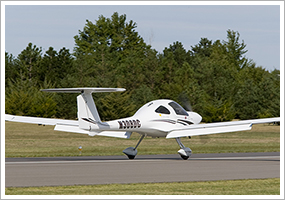This is the custom content for the August 27, 2010, issue of 'AOPA ePilot'
| The following stories from the August 27, 2010, edition of AOPA ePilot were provided to AOPA members who expressed an interest in the particular subject areas. Any AOPA member can receive information tailored to their areas of interest by updating their preferences online. |
training tipsTouchdown tolerances
So here’s a related question: What aim point did you choose for that nice touchdown? That decision is another importance nuance of landing—one with well-defined parameters. Normal approaches to normal-length runways are often taught to be made on the first third of the usable runway. If you are still airborne beyond that distance, it is time to go around and try again, as AOPA Air Safety Foundation President Bruce Landsberg recommended in this article on the Flight Training website.
A specialized approach such as a short-field landing requires touchdown much closer to the threshold—and the touchdown must occur “at or no more than 200 feet (60 meters) beyond” the designated point. Note that there is zero tolerance for touching down before the designated point.
This is testable material, and your practice session debriefings should include evaluating your performance to the proper standard. For example, another specialized landing technique, the forward slip to a landing, requires that touchdown occur “at or within 400 feet (120 meters) of a specified point, with no drift, and with the airplane's longitudinal axis aligned with and over the runway center/landing path,” all as detailed in the Private Pilot Practical Test Standards.
If that seems like a lot to get a grip on, first master the basic ideas of these techniques during your dual and solo flight sessions. Performing them to practical test standards in consideration of these details comes later and should be the eventual focus of the required three hours of flight test prep you must log before scheduling your flight test. Helping you plan your test prep is the goal of this discussion of the process on the Flight Training website.
Want more information to help you pin down better accuracy when hitting your touchdown aim points? Then check out the Nov. 11, 2005, “ Training Tip: Licking long landings,” and follow the links provided. You can also check out the Air Safety Foundation’s Mastering Takeoffs and Landings Safety Advisor. training productsRod Machado’s ‘Instrument Pilot Survival Manual’Flight Training contributor Rod Machado publishes a series of very popular flight training manuals, and his Instrument Pilot Survival Manual is now in its third edition. The new edition contains expanded GPS information and updates to the weather section. You can purchase it on Machado’s website for $34.95.
Note: Products listed have not been evaluated by ePilot editors unless otherwise noted. AOPA assumes no responsibility for products or services listed or for claims or actions by manufacturers or vendors. final exam
Question: What altimeter setting should I use if I am taking off from an airport that has no reporting station?
Answer: The federal aviation regulations address the question in FAR 91.121. In a nutshell, if you are flying below 18,000 feet msl you should set your altimeter to the current reported altimeter setting at your airport or at a station along your route and within 100 nautical miles of your aircraft. If there are no stations that meet these criteria, or if you do not have a radio, you can set your aircraft’s altimeter to field elevation before departure. For more on the importance of having the correct altimeter setting read the article “ Current altimeter settings really matter” from the AOPA Air Safety Foundation.
Got a question for our technical services staff? E-mail [email protected] or call the Pilot Information Center, 800/872-2672. Don’t forget the online archive of “Final Exam” questions and answers, searchable by keyword or topic. |
 The Aug. 20 “
The Aug. 20 “ 
